Content
- Introduction
- A brief history of the modern strawberry in Japan
- Development of new cultural systems after the introduction of plastic film in Japan
- Yield and cultural systems in the world
- Growth and development of strawberry as influenced by meteorological conditions
- Temperature and day-length affect the development of cultural system and yield in the world
- Production science for developing new cultural systems in Japan
- Summary
- Literature cited
Introduction
The USA has the highest strawberry yield (kg per hectare) in the world and its leading production area is the Pacific coastal area of California. Spain and northern Africa also have high yields, where the main production areas are along the Mediterranean coast. These regions have Mediterranean climate with warm wet winters and cool dry summers where strawberry plants flower and ripen fruit for a long period of the year.
Japan is meteorologically different from these regions, but it is also one of the major strawberry producers in the world where a high yield and high quality fruit are supplied for over half a year thanks to excellent cultivars and unique production technologies which have been developed since the 1960s. However, our highly sophisticated production technologies are not well known or recognized in the world. The objective of this article is to introduce the characteristics of cultural systems developed in Japan as compared with some typical cultural systems in the world.
A brief history of the modern strawberry in Japan
Before World War Ⅱ
The modern strawberry,Fragaria x ananassa, was introduced into Japan in the 1850s by the Dutch. Fruit production started after the Meiji Restoration of 1868. Meiji government introduced many cultivars from Europe and the USA and tested them in experimental farms. Cultivars which were proved adaptable to Japan were grown for fruit production and used for breeding work.
A unique forcing cultural system called ‘stone wall culture’ or ‘cement block culture’ was developed in 1904 at Kuno, Shizuoka in the central part of Japan. Stone walls were built on sunny, warm south-facing slopes and strawberries were planted among the stones. The growth, flowering and ripening of strawberries was forced with stones warmed by sunlight. Now, stones are replaced with cement blocks and strawberries are grown under plastic tunnels (Fig. 1). Young strawberry plants have been grown on the nursery at about 800m above sea level of Mt. Fuji to promote flower formation due to cool temperature before planting.
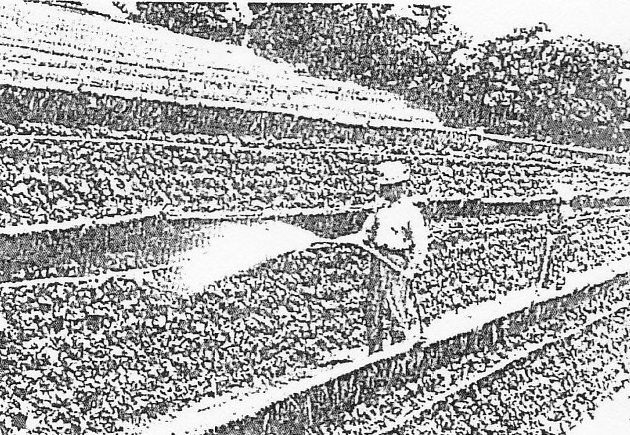
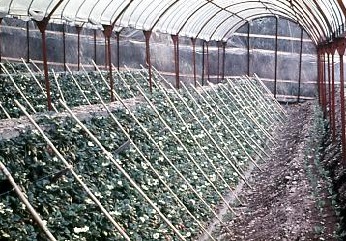
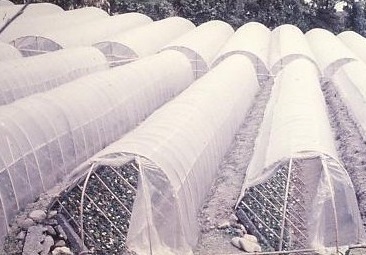
Fig. 1 Cement block culture at Kuno, Shizuoka in the 1940's (left), and in the 1990's (center and right)
Hayato Fukuba, an early horticulturalist, released the first Japanese cultivar, ‘Fukuba’, in 1905, which was selected from seedlings of a French cultivar, ‘General Chanzy’ (Fig.2). This cultivar was introduced into the cement block culture in the 1920s and grown untill the early 1960s.

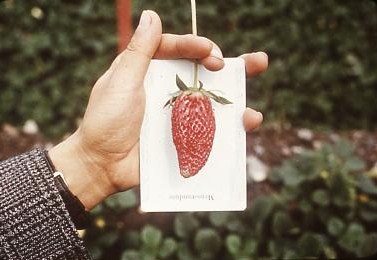
Fig. 2 ‘General Chanzy’ (left) and ‘Fukuba' (right)
After World War Ⅱ
It was only after World War Ⅱ that the strawberries became one of the most popular fruits in Japan. The demand for strawberries had increased owing to the rise of house-hold income resulting from the rapid economic growth of the 1960s and1970s. Gross strawberry production increased until the 1980s and then leveled off as shown in Fig. 3. Strawberry production met the needs of domestic consumption quantitatively in the 1980s.

Fig. 3 Strawberry production in Japan after World WarⅡ
In Japan, the natural ripening season for strawberries is short only from late May to June and low in yield. Since the introduction of plastic film for horticulture in 1956, many new production technologies have been developed and have resulted in longer harvesting periods and higher yields as shown in Fig. 4. Nowadays, strawberries are grown exclusively in plastic tunnels or greenhouses. Fruits are produced mainly from late autumn to early summer as shown in Fig.5. However, demand for fresh strawberries is not yet satisfied in summer and early autumn, because it is difficult to produce marketable fruit in either quantity or quality owing to high summer temperatures (Fig.5, 6).
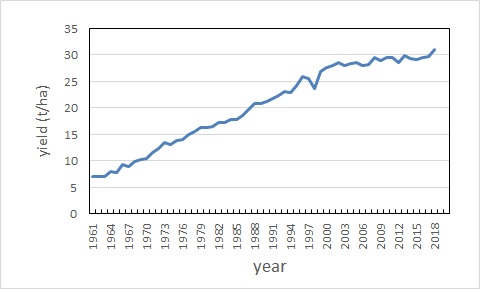
Fig. 4 Yield/hectre in Japan after World WarⅡ(FAO)
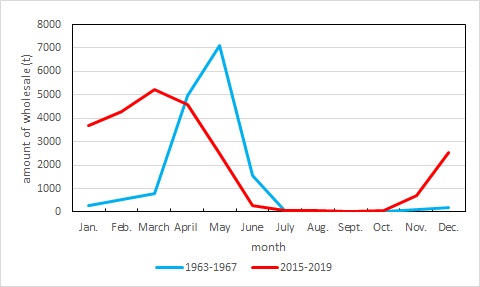
Fig.5 Seasonal trends in the amount of strawberries sold through the Tokyo Metropolitan Central Wholesale Market.
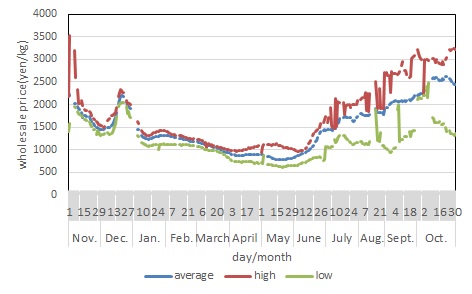
Fig.6 Seasonal trends in the wholesale price of strawberries in 7 major wholesale markets in Japan(2017-'18).
Development of new cultural systems after the introduction of plastic film in Japan
‘Sakugata’ in Japanese is a kind of cultural systems and a concept exclusively developed in Japan. It is an economically feasible cultural systems composed of diverse technical practices; cultivar, temperature and day-length control, protection with plastic film, fertilization, irrigation, pest-control, etc., in order to grow a crop in different seasons or under different climates. The development of this kind of cultural systems in strawberries has contributed to off-season production, longer harvesting periods, higher yields and better quality fruit.
The main cultural systems of strawberries in the1960s and the 2010s are shown in Table 1 and 2 respectively. In the 1960s, the ripening season was about 3 months from April to June from ‘early ripening’ and ‘common’ type cultural systems, because stone wall culture was confined to only a small area in Shizuoka prefecture. However, by the 2010s the strawberry ripening season has been extended about 7 months from November to June by the development of forcing and semi-forcing type of cultural systems. The season of strawberry fruits was once regarded as early summer, but now it is winter to early spring. Furthermore, intensive research work is being carried out to produce fruit in summer and autumn by using everbearing cultivars in cool areas of high altitude and/or latitude.
Table 1 Main cultural systems of strawberries in the 1960s.
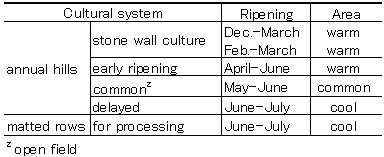
Table 2 Main cultural systems of strawberries in the 2010s.

Yield and cultural systems in the world
There are two major cultural systems in the world (Hancock, 1998); annual hills and matted rows. In annual hills, strawberries are planted from summer to winter in raised beds and replanted every year after harvesting. In matted rows strawberries are planted in spring on flat beds and allowed to runner freely in the planted year to increase inflorescences. Fruit is picked from the following year for 3-5 years before replanting. Both annual hills and matted rows have been modified in various ways to adapt to the different producing regions. Annual hills in particular have been especially applied to plasticulture or greenhouse culture and adapted for specific cultural systems such as bench culture, bag culture, aquaculture, fertigation, and staggering planting.
Table 3 Strawberry yields of some major strawberry growing regions(kg/ha,FAOSTAT, 2017-'21).

Table 3 shows the yield of some major strawberry producing regions in the world. The countries in groupⅠhave a Mediterranean climate and strawberry plants are grown using annual hills in the open or under brief covering with plastic film. Cool summers and warm winters result in long harvesting seasons and high yields.
In group Ⅱ- the highlands of tropical or subtropical regions. It is mild in temperature all year round. Strawberries are grown annually in the open and flowering for long periods.
Strawberry yield is fairly high in group Ⅲ- western Europe. Strawberries were once grown predominantly in matted rows, but now are grown either in matted rows or annual hills. June-bearing type cultivars are grown and picked for long periods by combining open, tunnels, and greenhouse with annual hills, and everbearing cultivars are grown for autumn picking. There is a high variation in the strawberry yield among countries in this region partly owing to the great diversity of cultural systems. The yield is very high in the Netherlands and Belgium (group Ⅲ-a), where a higher percentage of strawberries are grown in glasshouses or large tunnels. Fruit is harvested continuously by staggering the planting time. However, strawberry yields are a little lower in other western European countries (group Ⅲ-b ; the UK, Germany) where strawberries are mainly grown in open fields and in small tunnels.
In the East Asian countries of group Ⅳ- Japan and South Korea, strawberries are annually grown exclusively in plastic tunnels or greenhouses and have a long harvesting period of over half a year. In this region, the main harvesting season is from late autumn to early summer, while it is from spring to autumn in regions Ⅰ or Ⅲ.
Northern and Eastern Europe, the Northern US, and Canada are included in group Ⅴ in Table 3 due to the long cold winters and/or the short growing seasons. Strawberries are grown traditionally in matted rows. Yield is relatively low owing to the short harvest season.
We can summarize the relationship between cultural system and climate in Table 4. Yield is affected by many factors; not only climatic and technical, but also social and economic. However, Table 3 and 4 suggests that the climatic environment is one of the major factors which determine the cultural system and yield in a region by affecting the growth and development of the strawberry plants.
The strawberry yield has risen by increasing the yield per plant and/or extending the picking period. There are two different ways to extend the harvest season; one is to flower and ripen continuously for a long period from one planting such as in California and Japan, another is to harvest fruits for a long period from staggering planting such as in Belgium and the Netherlands.
Table 4 Meteorological condition and characteristics of strawberry production systems in some regions in the world.
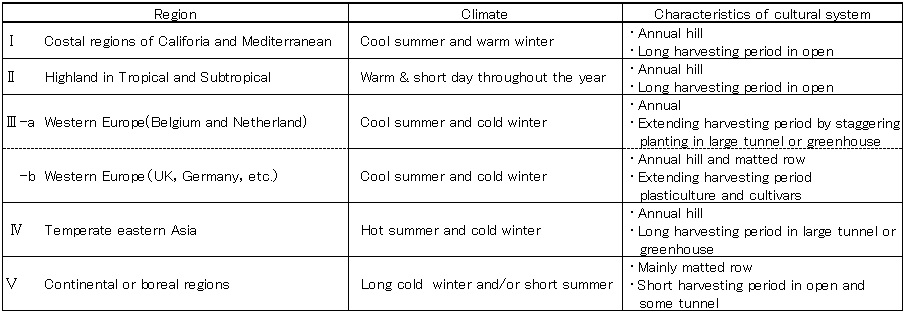
Growth and development of strawberry as influenced by meteorological conditions
Both Japan and California are in temperate zones, but the harvesting season is short with low yield in the open in Japan, as mentioned above. On the other hand, flowering and ripening last for 8-9 months in the coastal areas of California. Why is there such a large difference in the flowering and the yield between Japan and California?
Strawberry flowers are induced by low temperatures and/or short days (Ito & Saito, 1962). Flowers are induced by temperature of 5-15℃ even under long day. When temperature is higher between 15-25℃, the shorter day-length is required for flower induction, and flowers are not induced about above 25℃ regardless of day-length.
It has been reported that dormancy in strawberry plants is induced by short days and low temperatures in autumn and reaches the deepest state (the completion of the rest period) from mid-November to early December, and then is broken by cold winter temperature of about -2-8℃.
Fig. 8 shows the monthly mean temperature and day-length in Tokyo with the ranges of temperature and day-length for inducing flower and dormancy, and the range of temperature for breaking dormancy respectively. After the initiation of vegetative growth in early spring, June-bearing cultivars remain vegetative even under flower-inductive conditions; short days and/or low temperatures, because the chilling requirement for breaking dormancy is satisfied by winter coldness as shown in Fig. 9. Inflorescences initiated in the previous autumn grow and flower, and then fruits ripen from spring to early summer. Plants are vigorously vegetative and form runners from late spring to summer. Flowers are induced in early autumn by short days and cool temperatures followed by flower formation from autumn to early winter. Dormancy is induced in autumn due to short days and low temperatures and reaches the deepest dormant-state in early winter, and plants again grow vegetatively in early spring after dormancy is broken by the coldness of winter.

Fig.7 Annual trend of the monthly mean temperature and mean day-length in Tokyo.
As a result, strawberry plants show annual cyclic development in the natural climatic conditions of the temperate zone as shown in Fig. 9 (Seyama & Takai, 1992). This cyclic development results from the integration of the endogenous developmental cycle and the seasonal climatic cycle. It is modified by environmental factors such as temperature and day-length, and therefore, is different among different climate zones. For example, Darrow and Waldo(1934) reported that some strawberry cultivars when not given full rest period continued flowering and fruiting in greenhouse until July or August in Washigton, DC. Voth and Bringhurst (1958) also pointed out that ‘a lack of plant chilling history’ results in semi-continuous summer fruiting. Guttridge and Anderson (1976) called this phenomenon a ‘semi-resting physiological state’. This was very important to the development of new cultural systems in Japan.

Fig.8 Annual develpomental cycle of strawberry plants observed in Japan.
Temperature and day-length affect the development of cultural system and yield in the world

Fig.9 Annual trend of the monthly mean temperature and mean day-length in San Francisco compared to Tokyo.
Region Ⅰ:The Mediterranean and the Pacific coastal areas of California
Fig.9 shows the annual trend of the monthly average temperature and day length in San Francisco in comparison to Tokyo. There is a little difference in annual fluctuation of day length between Tokyo (5°46′N.L.) and San Francisco (37°46′N.L.), but there is a remarkable difference in an annual variation of temperature. San Francisco is warmer in winter and cooler in summer and has a smaller in the annual temperature fluctuation than Tokyo. In San Francisco, the average monthly temperature is below 20℃ even in mid-summer and it is above 10℃ in winter, while in Tokyo it is above 25℃ in summer and below 6℃ in winter.
In California, strawberry plants grow under flower-inducible temperature almost all the year round, and are be exposed to dormancy-inducible conditions (cool temperatures and short-days) in late autumn to winter, but are not exposed to low enough temperatures to break dormancy. Moreover, Californian cultivars have relatively higher chilling requirement for breaking dormancy than most cultivars used in the forced type of cultural system in Japan. Therefore, strawberry plants would remain in a‘semi-resting physiological state’even under the long days from spring to summer and flower for a long period. Such climatic characteristics are common in Mediterranean climatic zones like Spain and some northern African countries.
Region Ⅱ:Highlands of tropical and subtropical regions
Fig. 10 shows temperature and day-length in Mexico City which is in the highland of a subtropical region. The annual fluctuation of temperature and day-length is very small in this region. Strawberry plants grow in flower-inducible, but not dormancy-inducible temperatures and day-lengths almost all year round. Flowering and fruiting are able to last for long periods of the year. The potential strawberry yield should be high in the tropical and subtropical highland.
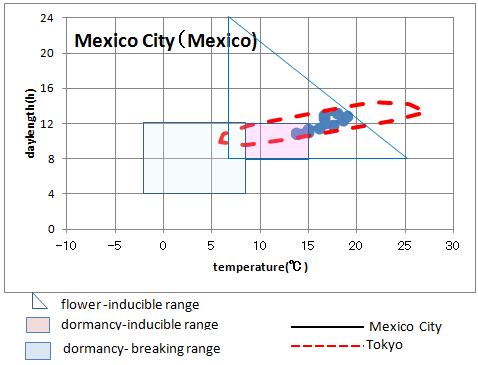
Fig.10 Annual trend of the monthly mean temperature and mean day-length in Mexico City compared to Tokyo.
Region Ⅲ:Western Europe
Fig. 11 shows the annual cyclic variations of temperature and day-length in De Bilt
(Netherland), London (UK) and Berlin (Germany) respectively. It is cool in summer,
but cold in winter in western Europe which is in a temperate zone, and the annual
fluctuation of day-length is large due to the high latitude. Strawberry plants show
the same cyclic development in open field as in other temperate zones; vigorous vegetative
growth from spring to summer, and flowering and fruiting in spring, ripening
from late spring to early summer, flower initiation in early autumn, dormancy induction
in autumn, the deepest dormant-state in early winter, and then dormancy breaking by winter
coldness. Harvesting may last only a few months on open fields in this region.
In Belgium and the Netherlands, a high percentage of strawberries are grown in greenhouses or
plastic houses by bag culture (Lieten, 1993). Trayed plants, waiting bed plants and
cold stored plants are set by staggering dates and fruit is harvested almost all year
around except in mid-winter. Although the harvesting period is relatively short from
one planting, this system is highly productive,

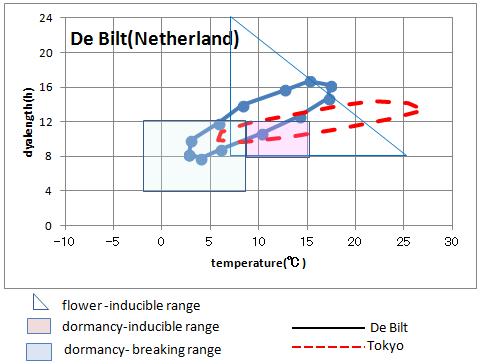

Fig.11 Annual trend of the monthly mean temperature and mean day-length in London, De Bilt and Berlin compared to Tokyo.
The UK has a mild maritime climate as shown in Fig.11 where the annual temperature
fluctuation is small. The harvesting period is extended from spring to summer using
diverse kinds of plasticulture; floating row cover, low or tall tunnels in June-bearing
cultivars and in autumn using by everbearing cultivars. Germany, with the continental
climate, has a warmer summer and a colder winter than the Netherlands or the UK. They produce
strawberries mainly in the open either in annual hills or matted rows. Some
strawberries are grown using tunnels so as to advance the harvest season.
In Western Europe marketable fruit is produced mainly from spring to autumn owing
to the cool summer and because it is not feasible to produce in winter due to cold
weather and low light intensity. The strawberry markets are differentiated in the EU by
the harvest season; for example, December to February from Egypt, January to March from
Morocco, February to May from Spain, March to December from the Netherlands and Belgium,
May to October from the UK, and July to September from Germany (Appeltans, 2010).
Region Ⅳ: Eastern Temperate Asia
The annual temperature fluctuation is large in this region. It has hot summers and cold winters (Fig. 7, 12). Therefore, strawberry plants in the natural climatic environment follow the typical annual development cycle as shown in Fig.8. The fruit ripening season is short and low in yield in the open. Moreover, it is too hot to produce good quality fruits in summer. In Japan, strawberry ripening has been forced since the introduction of plastic film for horticulture in the 1950s, because the earlier the fruit ripened, the higher price was. Sunlight is abundant from winter to spring in the Pacific coastal region of Japan and strawberry production is economically feasible from late autumn to early spring under plastic film even without heating. Strawberry plants are set in early autumn and fruits are picked from late autumn to early summer by controlling flower formation and dormancy as shown in Table 2 (forcing cropping type). Such production techniques are widely used in eastern Asia such as Japan, South Korea, and temperate mainland China.

Fig.12 Annual trend of the monthly mean temperature and mean day-length in Busan compared to Tokyo.
Region Ⅴ; Scandinavia, Eastern Europe, and Northern America
As these regions have long cold winters and short summers as shown in Fig. 13, matted rows are popular in this region. Strawberry plants are set in spring and are allowed to runner in the first year to increase plants (i.e.crowns and inflorescences) with fruits being harvested from the 2nd year for 3-5years. Plasticulture is not effective in this region for extending the harvest season as it is in the temperate climate zone.
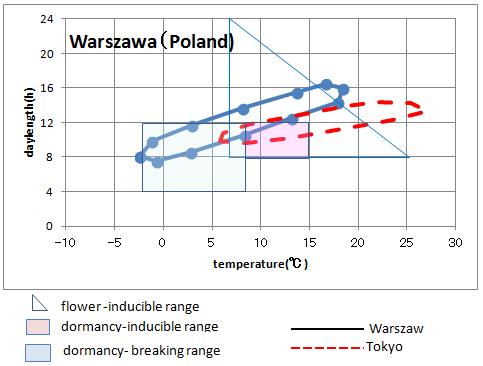
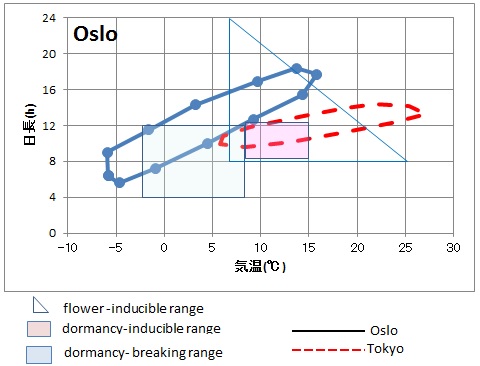


Fig.13 Annual trend of the monthly mean temperature and mean day-length in Warszawa, Oslo, Montreal and Chicago compared to Tokyo.
Production science for developing new cultural systems in Japan
Forcing growth and ripening from autumn to winter is economically feasible by protecting plants with plastic film owing to the abundant sunlight in Japan. Early covering strawberry plants with plastic film resulted in earlier fruit ripening. However, covering too early led to stunted growth, poor fruiting, and low yields owing to the dormant-state being too deep. It has been proved that a certain amount of chilling is required for vigorous growth and high yield, and that chilling requirements are different among different cultivars. The specific amount of chilling required for semi-resting state plants to grow vigorously and flower continuously has been determined for each cultivar, and this was an indicator of when to cover with plastic film.
At first, strawberry plants were covered with plastic film after the plants were exposed to a specific amount of chilling hours in the open field depending on their cultivar. This is the semi-forcing type of cultural system which was developed in 1960s-1970s as shown in Fig.14. Next, strawberry plants were artificially chilled by transferring them to a highland or a refrigerator in order to force earlier. After being planted under plastic, the plants were grown under long-day with lightening and/or gibberellin application to promote growth and flowering.
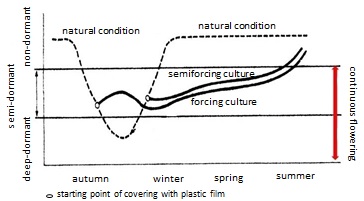
Fig.14 Relationship between dormancy and cropping type (revised from Takai,1976 & Uematsu,1998).
Strawberries start ripening from February in the semi-forcing type as shown in Table 2. The forcing type system was developed to supply fruit for Christmas and New Year when strawberries are popular and high in price. This cultural system was developed by combining the regulation of plant development and adaptable cultivars as follow;
Promotion of flower formation:strawberry plants are exposed to some different kind of treatments from August to early September such as planting in the nursery on highland, low nitrogen nutrition, cooling (10℃) under complete darkness in a refrigerator, or short-day + cooling with a special equipment developed to promote flower-induction. Strawberries plant were grown under plastic after flower formation was confirmed with a stereoscopic microscope.
Control of dormancy: Plants are forced under plastic before a too deep dormant-state and remain in flowering continuously without stunting as shown Fig. 14. In some cultivars or in some districts plants are grown under long-day with GA spray to promote vegetative growth.
Breeding work: Cultivars have been bred which form flower earlier and require less chilling to break dormancy and are adapted to the forcing type cultural system. Some recently released cultivars make it possible to start harvesting in November even without promoting flower induction.
Summary
Many kinds of cultural systems have been developed to extend the harvesting period and increase the yield in the many regions of the world under diverse climate conditions. Japan has hot summers and cold winters and strawberries flower and ripen for only 1-1.5months in natural open field conditions. However, Japan has developed some unique cultural systems adapted to the climatic condition. The forcing type cultural system has been established by combining three main technologies; promotion of flower formation, control of dormancy and breeding cultivars with early flower formation and low chilling requirements.
Literature cited
- Appeltans, P. (2010), Strawberries in Europe. International Strawberry Congress Antwerp, Sept.1 2010. Verbond van Belgische Tuinbouwveilingen.
- Darrow, G. M. and G. F. Waldo (1934), Responses of daily strawberry varieties and species to duration of the light period. USDA Tech. Bul. 453.
- Guttridge, C. G. and H. M. Anderson (1976), Promoting second cropping in strawberry by avoiding chilling or advancing spring growth. J. Hort. Sci., 51, 225-234.
- Hancock, J. F. (1999), Strawberries. CABI Publishing, New York, USA.
- Ito, H. and Saito, T.(1962), Studies on the flower formation in the strawberry plants. I. Effects of temperature and photoperiod on the flower formation. Tohoku J. Agr. Res., 13,191-203.
- Jonkers, H.(1965),On the flower formation, the dormancy and early forcing of strawberries. 59pp, Meded. Landbouwhoogeschool, Wageningen.
- Lieten, F. (1993), Methods and strategies of strawberry forcing in central Europe: historical perspectives and recent developments. Acta Horticulturae, 348, 158- 170.
- Scott, R. R., Zhang Lei and Wang Tong (2010), China – Peoples Republic of Strawberries (end of year report). Gain Report, USDA. 6p.
- Seyama, N. and T. Takai (1986), Study on the seasonal pattern of the growth and flower formation of strawberry plants as related to environment and endogenous physiological conditions. Bull.Veg. & Ornam. Crops Res. Stn. Japan, Ser. B., 6, 31-77.
- Voth, V. and R. S. Bringhurst (1958), Fruiting and vegetative response of Lassen strawberries in Southern California as influenced by nursery source, time of planting, and plant chilling history. Proc. Amer. Soc. Hort. Sci., 72, 186-197.
(Norio Seyamaex-researcher, National Research Institute for Vegetable & Ornamental Crops, Japan)
→Top page